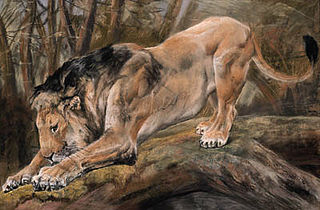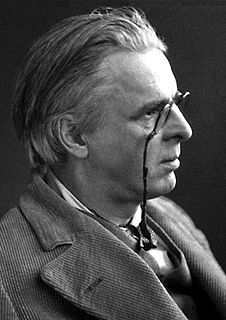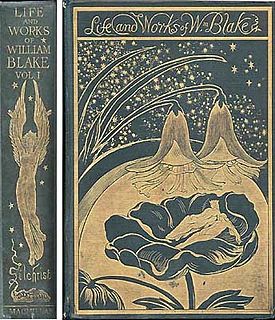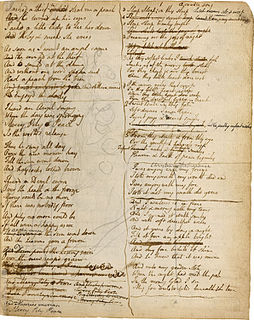 | |
| Author | Edwin John Ellis, William Butler Yeats |
|---|---|
| Country | England |
| Language | English |
| Genre | Biography, Literary criticism |
| Published | Bernard Quaritch |
Publication date | 27 January 1893 |
The Works of William Blake: Poetic, Symbolic and Critical, edited with lithographs of the illustrated prophetic books, and a memoir and interpretation by Edwin John Ellis and William Butler Yeats, is a three-volume commentary book about the English poet, painter and printmaker William Blake.

The prophetic books of the 18th-century English poet and artist William Blake are a series of lengthy, interrelated poetic works drawing upon Blake's own personal mythology. They have been described as forming "what is in proportion to its merits the least read body of poetry in the English language". While Blake worked as a commercial illustrator, these books were ones that he produced, with his own engravings, as an extended and largely private project.

The English people are a nation and an ethnic group native to England who speak the English language. The English identity is of early medieval origin, when they were known in Old English as the Angelcynn. Their ethnonym is derived from the Angles, one of the Germanic peoples who migrated to Great Britain around the 5th century AD. England is one of the countries of the United Kingdom, and the majority of people living there are British citizens.
Written through a dual collaboration between the poets Edwin John Ellis and William Butler Yeats and published by Bernard Quaritch in 1893, this work was the first comprehensive attempt to interpret Blake's œuvre, by placing its importance on his "prophetic books", in contrast to their predecessors's interpretative approach, who edited other critical works about Blake, such as Algernon Charles Swinburne and William Michael Rossetti, to name a few. Also, the work was the first collected edition of the majority of Blake's poetry, with an erudite commentary, despite its erroneous and misleading traits, like the memoir. [1] As one of the significant nineteenth-century developments in the dissemination of Blake's poetry, this book also made an ambitious attempt to interpret the poet's vatic approach to the making of literature. Today, this classic of 1893 is still illuminating for the lifetime influence it had on one of its editors, W. B. Yeats, who became perhaps the twentieth century's greatest poet in English and, like Blake, a visionary one, at that. [2]

Edwin John Ellis (1848–1916) was a British poet and illustrator. He is now remembered mostly for the three-volume collection of the works of William Blake he edited with W. B. Yeats. It is now criticised, however, for weak scholarship, and preconceptions.

William Butler Yeats was an Irish poet and one of the foremost figures of 20th-century literature. A pillar of the Irish literary establishment, he helped to found the Abbey Theatre, and in his later years served two terms as a Senator of the Irish Free State. He was a driving force behind the Irish Literary Revival along with Lady Gregory, Edward Martyn and others.

Algernon Charles Swinburne was an English poet, playwright, novelist, and critic. He wrote several novels and collections of poetry such as Poems and Ballads, and contributed to the famous Eleventh Edition of the Encyclopædia Britannica.
From 1889 to 1893 Yeats was involved with Edwin Ellis, a minor painter and poet, in a three-volume edition of Blake's works, with a memoir and interpretation of the symbolism, which was an elaborated effort to define every aspect of these symbols. Yeats was satisfied to find out that Blake's artistical and poetical ideas harmonized with those of the theosophists and the students and members of the Hermetic Order of the Golden Dawn, for now he could use occult materials and claim the authority of a great poet for such beliefs and inspirations, in order to cultivate and imbue them into his own poetry. Blake, in short, bore, through his poetical and spiritual aspirations, amazing parallels to those of Yeats. Here was a sublime justifying precedent. Also, this set contains the first reproduced illustrations of Blake's Prophetic Books and is the first collection to publish Blake's Vala, or The Four Zoas . Yeats marked down William Blake as a master early on, and with Edwin Ellis produced a large-scale commentary on Blake's prophetic writings in 1893. While often erratic and idiosyncratic, it helped establish the importance of Blake's esoteric verse. [3]
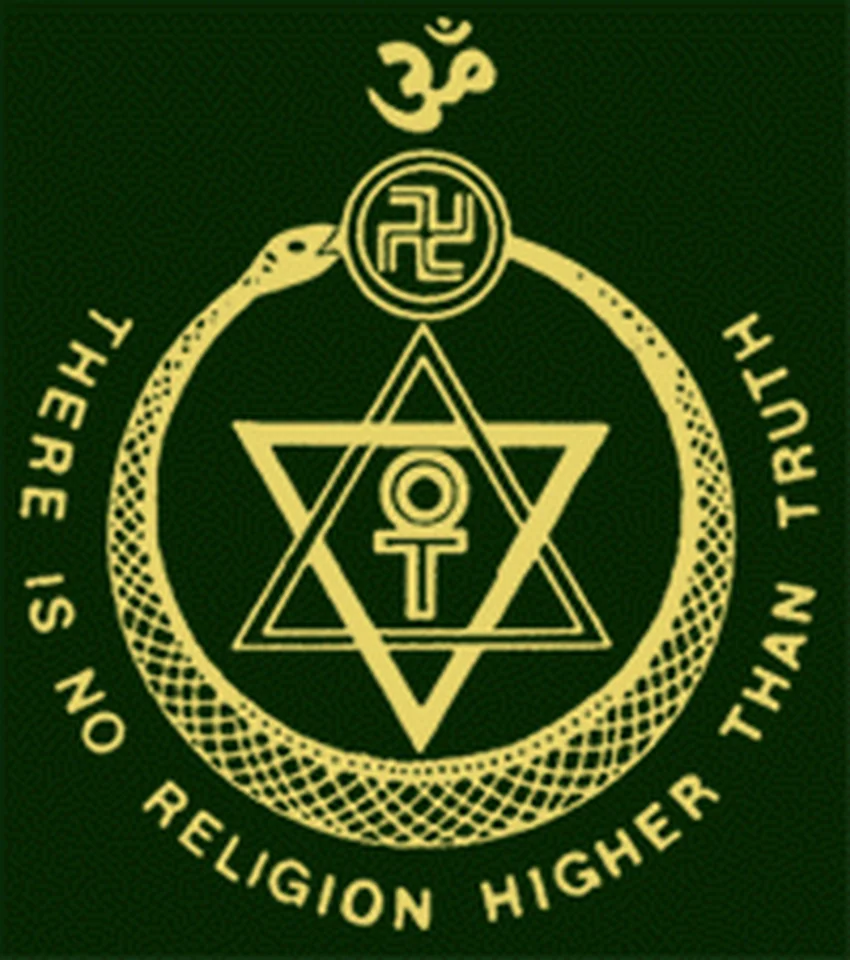
Theosophy is an esoteric religious movement established in the United States during the late nineteenth century. It was founded largely by the Russian émigrée Helena Blavatsky and draws its beliefs predominantly from Blavatsky's writings. Categorised by scholars of religion as both a new religious movement and as part of the occultist stream of Western esotericism, it draws upon both older European philosophies like Neoplatonism and Asian religions like Hinduism and Buddhism.

The Hermetic Order of the Golden Dawn was a secret society devoted to the study and practice of the occult, metaphysics, and paranormal activities during the late 19th and early 20th centuries. Known as a magical order, the Hermetic Order of the Golden Dawn was active in Great Britain and focused its practices on theurgy and spiritual development. Many present-day concepts of ritual and magic that are at the centre of contemporary traditions, such as Wicca and Thelema, were inspired by the Golden Dawn, which became one of the largest single influences on 20th-century Western occultism.

Vala, or The Four Zoas refers to one of the uncompleted prophetic books by the English poet William Blake, begun in 1797. The titular main characters of the book are the Four Zoas, who were created by the fall of Albion in Blake's mythology. It consists of nine books, referred to as "nights". These outline the interactions of the Zoas, their fallen forms and their Emanations. Blake intended the book to be a summation of his mythic universe but, dissatisfied, he abandoned the effort in 1807, leaving the poem in a rough draft and its engraving unfinished. The text of the poem was first published, in 1893, by the Irish poet W .B. Yeats and his fellow collaborator, the English writer and poet Edwin John Ellis, in their three-volume commentary book about William Blake's works, The Works of William Blake: Poetic, Symbolic and Critical.

